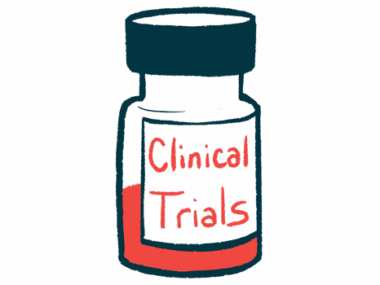HAE patients are satisfied with PHVS416, report better life quality
Immediate-release deucrictibant capsule is being developed by Pharvaris
Written by |

An immediate-release capsule of deucrictibant that’s being developed by Pharvaris continues to show promise as an on-demand and preventive treatment for attacks of hereditary angioedema (HAE).
“We believe deucrictibant is the only oral molecule with the potential to address both the on-demand and prophylactic treatment modalities for people living with HAE,” Berndt Modig, CEO of Pharvaris, said in a company press release.
Patients appear satisfied with how well the immediate-release PHVS416 works, suggesting “deucrictibant has the potential to become the preferred therapy for people living with HAE in both on-demand and prophylactic treatment modalities,” said Peng Lu, MD, PhD, Pharvaris’ chief medical officer.
Deucrictibant is designed to interfere with the activity of bradykinin, a signaling molecule that causes blood vessels to widen and become more permeable, which lets fluid escape and leak into nearby tissues. It does so by binding to the receptor bradykinin normally interacts with to trigger its effects, preventing it from doing so. Blocking bradykinin’s signaling cascade should reduce the swelling attacks that occur in angioedema.
In RAPIDe-1 (NCT04618211), a Phase 2 study of 74 adults with HAE type 1 or 2, on-demand treatment with PHVS416 at 10, 20, or 30 mg outperformed a placebo at easing pain and swelling in the skin, along with abdominal pain, within four hours of dosing.
A post hoc analysis of RAPIDe-1 presented at the 2024 Eastern Allergy Conference (EAC) in Florida showed the proportion of swelling attacks for which 20 mg of PHVS416 provided “almost complete or complete symptom relief” within 24 hours was nearly five times as high as that offered by a placebo (71.4% vs. 15.7%).
When the researchers looked at treatment outcomes based on the Treatment Outcome Score (TOS) questionnaire, which measures changes in symptoms in five areas, they found that a greater proportion of patients felt their symptoms were “a lot better or resolved” with 20 mg (78.6% vs. 22.4%).
Both the primary and post hoc analysis “provide consistent evidence that the majority of HAE attacks achieved the treatment outcomes of substantial symptom relief and symptom resolution within 24 hours,” the researchers wrote in the poster presented at the conference.
Testing 20, 40 mg of PHVS416
CHAPTER-1 (NCT05047185), another placebo-controlled Phase 2 study, is testing the safety and effectiveness of PHVS416 given once daily at 20 or 40 mg as prophylaxis in 34 adults with HAE type 1 or 2.
Both dose strengths were well tolerated and outperformed the placebo at reducing the rates of monthly swelling attacks, including those that required on-demand medication for relief, topline data showed.
New data presented at this year’s European Academy of Allergy and Clinical Immunology (EAACI) congress in Spain showed that PHVS416 reduced those monthly attack rates regardless of how often patients had swelling attacks before treatment. That presentation was titled “Efficacy and Safety of Oral Deucrictibant, a Potent Bradykinin B2 Receptor Antagonist, in Prophylaxis of Hereditary Angioedema Attacks: Results of CHAPTER-1 Phase 2 Trial.”
In another presentation at EAACI, researchers showed that all the patients treated with the higher PHVS416 dose reported better quality of life, as measured using the Patient Global Assessment of Change.
Most patients treated with either 20 mg (80%) or 40 mg (77.8%) felt “much better” after treatment compared with 12.5% in the placebo group. Only one 20 mg patient reported no change.
“If these data are confirmed in the planned Phase 3 study, deucrictibant may be the first oral prophylactic option demonstrating statistically significant and clinically meaningful [health-related quality of life] improvement,” the researchers wrote in the presentation.
Consistent with separate observations with high-efficacy injectable medications, patients were satisfied with how well PHVS416 worked, according to the Evaluation of Treatment Satisfaction Questionnaire for Medication (TSQM), an 11-item questionnaire where higher scores indicate greater satisfaction.
After three months of treatment, the patients on 20 mg of PHVS416 scored on average 40 points higher on the TSQM regarding their satisfaction with treatment effectiveness than those on a placebo. The difference was of 36.7 points for the 40 mg group. There were no differences in side effects or convenience of use.
The patients treated with PHVS416 were also more satisfied with treatment, scoring nearly 30 points higher on the TSQM than those on a placebo.
“The data presented at EAC and EAACI reinforce the benefits of deucrictibant, such as … symptom resolution in 78.6% of participants within 24 hours following on-demand treatment, and the injectable-like efficacy, favorable safety profile, and convenience of deucrictibant for prophylactic treatment,” Lu said. “Looking ahead, we expect to publish data from our ongoing open-label extensions in both on-demand and prophylaxis.”
Lu said the data will “provide insights into on-demand treatment observations across multiple HAE attacks, including laryngeal [throat] attacks, which may position deucrictibant as a best-in-class treatment for HAE.”






